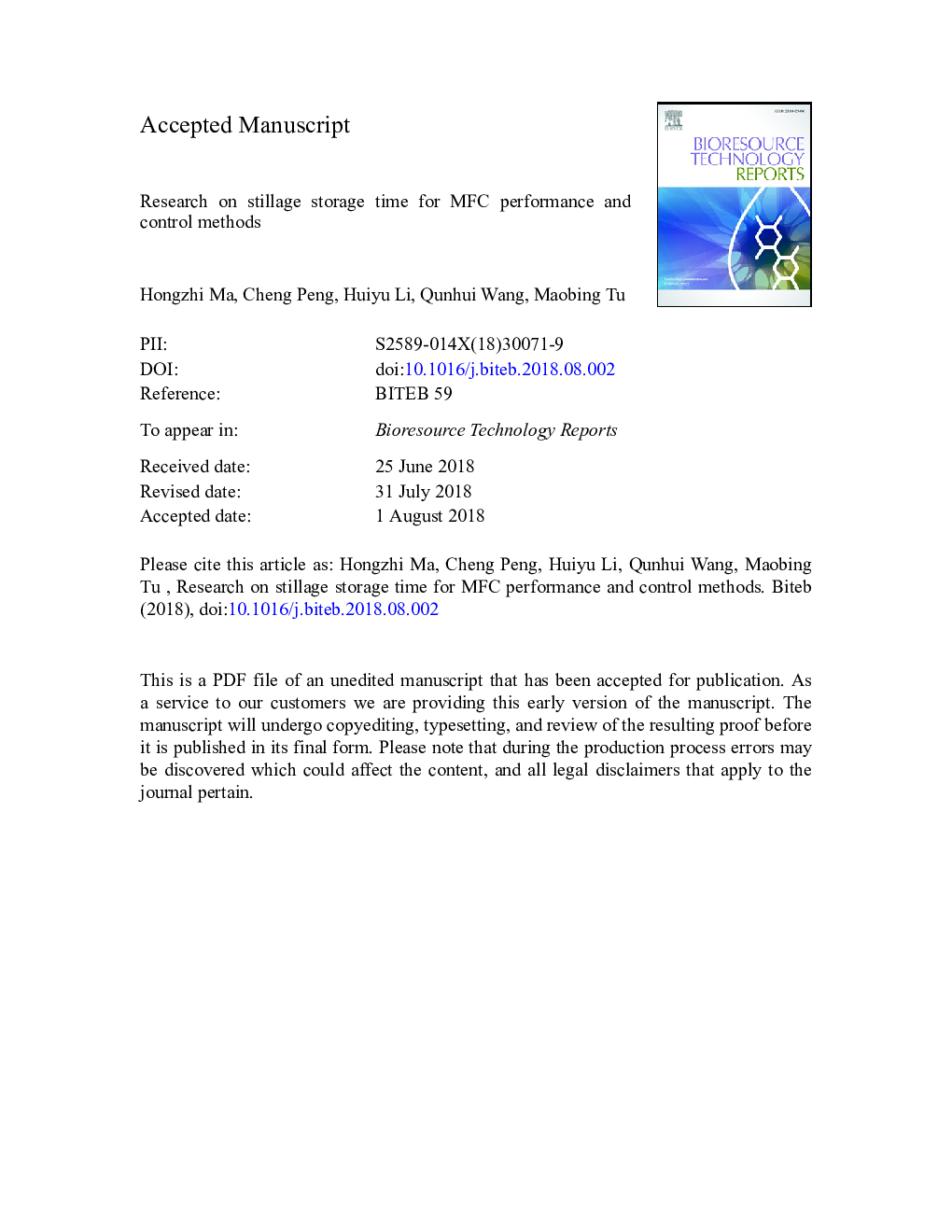| Article ID | Journal | Published Year | Pages | File Type |
|---|---|---|---|---|
| 10999736 | Bioresource Technology Reports | 2018 | 27 Pages |
Abstract
Electricity generation from a microbial fuel cell (MFC) with old (stored for one year) and new (freshly obtained) food waste ethanol stillages were studied. The composition and toxicity of the stillages were detected. Tween 80 was added to investigate the feasibility for regulation. Results showed that the maximum power densities of MFC with old and new stillages were 560.7 and 426.6â¯mW/m2, respectively. The new stillage is more toxic than the old stillage. The maximum output power density based on the cathode area increased from 560.8â¯mW/m2 to 1208â¯mW/m2 after adding 20â¯mg/L Tween 80 to the old stillage, and the relative luminescence inhibitory rate of its biotoxicity decreased from 93.48% to 89.53%.
Keywords
Related Topics
Physical Sciences and Engineering
Chemical Engineering
Bioengineering
Authors
Hongzhi Ma, Cheng Peng, Huiyu Li, Qunhui Wang, Maobing Tu,
